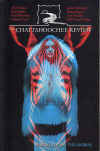The Chattahoochee Review – Fall/Winter 2013
The theme of this issue of The Chattahoochee Review is animals, broadly interpreted enough to span war, destiny, and the romantic capitalization of road kill. Reading the journal straight through may change the way you perceive animals, art and even the construction of modern plot conventions.
The theme of this issue of The Chattahoochee Review is animals, broadly interpreted enough to span war, destiny, and the romantic capitalization of road kill. Reading the journal straight through may change the way you perceive animals, art and even the construction of modern plot conventions.
David Bajo approaches the task as though trying to hunt down a type of pit viper; well, his characters do. The prose is electric, the images fantastic. Yet Bajo does not employ the rich stylistic past as a crutch—this is not your grandma’s magic realism. In his compelling short story “Snake Life,” he tempers the fantastic of the genre with a more reliable Catholic mysticism, just enough to build on what had come before. Some might suggest that strict adherence to classic surrealism is, to a certain extent, imitative, a cop-out, but the manner in which Bajo overrides that kind of objection is perfect. The pacing and compact storytelling create a kind of powerful entity (or engine) in itself; the hybrid of the imaginative and the real, without any kind of perceptible sleight. Here is an example:
The last image Aaron saw was Alejandro swinging the snake in a long and powerful arc swiping the summer sky. The centrifugal force stretched the viper to its full length. The gray, green, and black stripes looked like a breach in the sky, the tattooed knuckles of something great trying to push through. Aaron’s vision went black with the thud of the snake’s body slamming onto the summer hardpan.
You are desperate for Aaron’s safety, racing through the pages for any kind of answer—and this desperation in a reader is a tribute to the writer who created such love.
Morris Collins’s story of DIY taxidermy project using a carcass of an abandoned bobcat and the unfortunate decapitation of a thirty pound Maine Coon is the apex of comic writing, in a completely original voice. His word choice and cadence heighten the humor; this is not your grandma’s Borscht Belt wisecracking. His phraseology and approach are radically idiosyncratic and a delight to read.
If you, like F. Scott Fitzgerald, prefer to emulate the best of your competitors, The Chattahoochee Review is worth every page; the journal is rife with strikingly well-constructed models. You will not recognize any set up or subterfuge because you will be too preoccupied with caring about the characters.
Take Phong Nguyen’s short story “Hush, Please,” where the missionary Abel Hanson risks his life to spread the Gospel during ramifications of the Cambodian Genocide. The language is finely hewn, sparkling, while the dramatic tension escalates. The structure is powerful and ricochets between past and present, the philosophy of evangelism and the passion of parenthood, and while the story reverberates with elsewhere (elsewhere in time, place, and perception) each paragraph contains the ideas and deep humanity that connect life across belief systems. Take the climactic section where Hanson faces his death. A child soldier with a gun guides him to a shed.
[T]he boy pushes the door of the shed open all the way and gestures for us to go inside . . . our eyes adjust to the darkness, we see an empty room with an even younger child, whose feet are raw and bleeding. His skinny legs stretched in front of him, his bloated feet pointing out at a slight angle and look like a pair of hastily painted croquet mallets.
The older boy gestures with his gun at our Red Cross backpacks, which are filled with nothing but Bibles.
The consistent wisdom, the enlisted Scripture, the larvae’s yearning for light amid the obsidian void between the ministered and the ministry is suspect, of course. The reader is unsure of the narrator, and of Sen, the child who, in his capacity (or derived capacity) of a Khmer Rouge prison guard, first sought to shoot Hanson unless he could heal his brother’s diseased feet.
The story—like Bajo’s—concludes with many questions outstanding, as if you have walked into a room with the breeze carrying the shears into the open windows and boiling back out over the rainy streets, the sheets on the bed torrentially scattered. It is a beautiful room, but the players left no forwarding address, and in the theater of those fixtures, you are looking at the curtains billow, and wonder who has been here, and where have they gone?
[thechattahoocheereview.gpc.edu]





